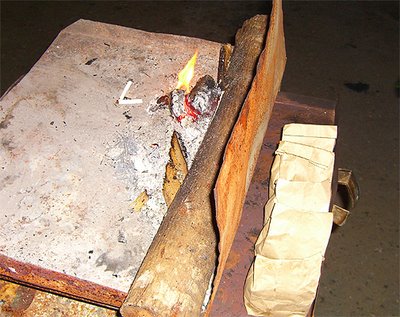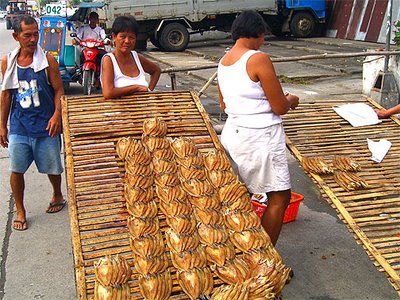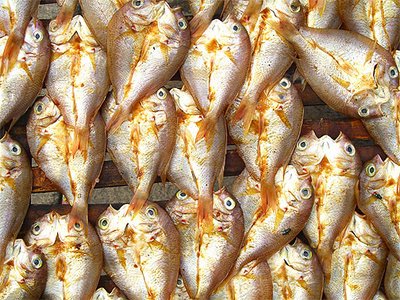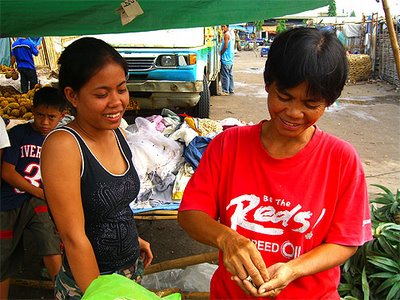 Liliw
Liliw is on the southern side of Laguna and rests at the foot of yet another mountain - the mystical Banahaw. It is said to be the
Footwear Capital but again, footwear makers of Carcar in Cebu and those in Marikina City wouldn't be happy with this claim.
What the heck. Let's just call Liliw the
Tsinelas Capital, shall we?Anyway, I'm glad to be finally here. This is my second stop here in Laguna in what is a dizzying tour of this beautiful province. There's just too much to see! And Liliw is one town no visitor to Laguna should ever miss. Founded in 1571 by Gat Tayaw, it is 17 kilometers away from
Santa Cruz, Laguna's capital.
According to a story, Liliw got its name from a bird. It was said that Gat Tayaw and his followers decided to erect a bamboo pole and to name the town after the bird that would first alight at the top of the pole within four days. A crow, however, was the first bird to alight on the pole. A crow was considered bad and so Gat Tayaw and his men moved south and erected another bamboo pole. A beautiful bird alighted on the pole and sang, "Liw, Liw, Liw". Thus the town became Liliw.
Throughout the Spanish regime, the name Liliw was used. When the Americans came, it became
Lilio since the Americans found it easier to pronounce it than
Liliw. However, on June 11, 1965, the municipal council passed Resolution No. 38-S-65 which declared Liliw as the official name and spelling of the town to avoid confusion in pronouncing and spelling it. (
Source: Wickipedia)
The historical relics of Liliw are compiled and found in
Bahay Laguna that also houses some souvenirs and tokens of the late governor of Laguna, F. San Luis. This museum is found in Barangay Bungkol, Magdalena. It's a newly opened community museum where you can find samples of the great arts and crafts of the province. I hope to visit it soon when I return. No photos of the church for now. My camera ran out of battery on the way there, grrrr.

My hosts brought me here at YSL which turned out to mean YARI SA LILIW (Made in Liliw), ha ha! Don't you just love Pinoy humor?

Sandals here start Php 70 and can go up to Php 150 per pair. You can always ask for a discount.

The men's sandals surprisingly look very modern!


A Laguna native warned me about buying shoes in Liliw. They are said to be very uncomfortable. Maybe we should just leave the shoe making to Marikina, eh? The sandals are just to die for already!
For a few hundred bucks, you can bring home so much more from Liliw, but the experience is just priceless! I really hope to be back.










































